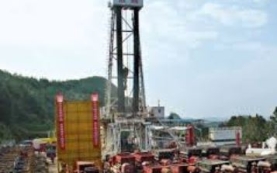News
Fitch Ratings puts CLP Power Hong Kong on rating watch negative
Just soon after news of acquisition came out.
Fitch Ratings puts CLP Power Hong Kong on rating watch negative
Just soon after news of acquisition came out.
Korea to hike electricity prices by 5.4% on 21 November
What are the domino effects?
China’s power generation surged 10.5% in October
Thermal power generation up 16.1%.
IEA warns global warming will intensify
Temperatures could rise to nearly twice the UN targets. The International Energy Agency warns this could come about despite campaigns promoting energy efficiency and international pledges to limit global warming. It said greenhouse gas emissions (GhG) will rise by 20% by 2035, leading to a world temperature increase of 3.6 degrees, well above the United Nations target of 2.0 degrees. IEA said the global energy sector is responsible for two-thirds of global GhG and whatever trends surface in the coming years will be key to determining if climate change commitments are met. IEA has said the world temperature would jump by six degrees if all efforts to limit human-based emissions were abandoned. It has, however, praised recent initiatives in many of the world’s largest economies to limit carbon emissions. But despite best efforts, climate-changing energy consumption is still on a sharp rise. IEA forecast that global demand for oil could hit 101 million barrels per day, a rise of 14 mbd in less than a quarter of a century. This total is the equivalent to about 16.1 billion liters of oil being burned every 24 hours. Coal use will rise by 17% from today until 2035, primarily because coal remains far cheaper than cleaner natural gas. Any prospect of reversing the continuing increase in the use of coal depends mostly on China, the world’s biggest energy consumer, which burns as much coal every year as the rest of the world combined.
Korea, Russia look into integrating their national power systems
Sign agreement to research and investigate plan. Korea Electric Power Corporation, En+ Group and the Skolkovo Institute of Science and Technology have signed a Memorandum of Understanding to do joint research into the integration of power systems of the Russian Federation and the Republic of Korea. Kepco is the largest electricity producer in South Korea. En+ is Russia's leading mining, metals and energy group while Skoltech is a new Moscow-based international university of science and technology created in partnership with the Massachusetts Institute of Technology. The research, which will be conducted at Skoltech, will focus on possible routes and volumes of electricity to be supplied from Russia to South Korea, and the options to exchange power flows for day/night and seasonal phases. The research should take two years. It is a part of the NEAREST project (North East Asian Region Electrical System Ties), an APEC initiative to integrate power systems of North East Asia countries including China, Japan, Mongolia, Russia, South Korea and some other economies. NEAREST aims to secure a more reliable power supply, lower electricity costs and reduce environmental impact of the energy sector. This initiative was announced at APEC Energy working group in November 2012 and supported by the governments of China, Russia, South Korea, Singapore and USA.
South Korean biomass-fueled power plant moves ahead with expansion
Plant is a joint venture with Oman. GS EPS Company has officially inaugurated phase three of its expansion plan, taking the total production capacity of its biomass-fueled power plant at Dangjin to 1,500 MW. The firm is a JV between Oman Oil Company, which holds 30%, and South Korean firm GS Holdings that owns the remaining 70%. Phase 1 of the plant has a capacity of 538 MW and was commissioned in 2001 while Phase 2 (550 MW capacity) was commissioned in 2008. Phase 3 has already begun. The Dangjin plant will become one of Asia’s largest biomass plants and will use a mix of agricultural and associated byproducts. The plant will be capable of generating 2,300 MW of electricity including 100 MW of biomass production to the three existing LNG fired combined cycle power plants. It is expected to be completed in 2015. GS EPS also owns and operates an LNG-fired combined cycle power plant and ancillary facilities in Pyongtaek. The plant sells its electricity to state-owned electricity utility Korea Electric Power Company.
Fossil fuels to remain top global energy source
This despite rising use of renewable energy.
Koizumi asks Abe to ditch nuclear power
Former PM wants Abe to use nature as resources.
Korea, UK partnering in hydrogen fuel cell project
It’s a new phase of scientific cooperation between Korea and the UK.
Tamil Nadu businessmen crafting renewable energy policy
Will guide development of this important sector.
China on way to becoming world’s third largest nuclear power producer
Up to a dozen nuclear reactors to come online by 2014.
India hastens implementation pace of solar projects
States providing support and subsidies.
Asia-Pacific’s PV energy demand is rising
Will exceed Europe’s this year.
Indian solar steam generators now operational
System built in Denmark.
GCL-Poly takes out US$480 million loan to pay-off debts
Pushes forward despite losses.
China reveals five-year plan for shale gas industry
Wants to duplicate US success in shale gas extraction.
Chinese firm set to rehabilitate key Philippine power plant
Chinese dominate bidding for Agus VI hydroelectric power plant.


















 Advertise
Advertise


















